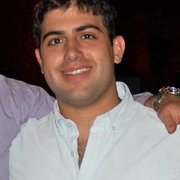Robert G.
Yelp
My review of the University of Virginia itself was moved to this listing. I didn't move it there and I didn't review the Rotunda. I didn't even know the listing existed. However, because I've since visited and have photos of it, I will gladly review the Rotunda at the University of Virginia.
The Rotunda at UVa is two things. It's currently and clearly the icon of this renowned university. And it was probably the largest building on the campus at one time when it crowned the Academical Village, essentially the more basic, rectilinear but large complex of rooms and housing units that was the university in its initial years. In reading another review by a Yelper who always knows what he's talking about, it was the library for the school. That makes sense. It opened in 1826, while the university was officially founded in 1819. It was designed by Thomas Jefferson, our third President and a renaissance man, although somewhat of a quirky guy. Have you ever seen some of the nifty furniture and contraptions he came up with? It's not what you would expect of a President. Without reading about the Rotunda, nor even knowing its current use and purpose, it looks like it took some cues from the Pantheon in Rome. One thing is for sure: it's a beautiful, captivating, and nicely scaled edifice.
The Rotunda is strategically sited and it's almost impossible to miss it when at UVa. It's on University Avenue, a two lane road, and as you round a bend, it will be on one side of the road, set up on a flight of steps, and with the Academical Village and Great Lawn beyond it. Note that the Great Lawn is very much a lawn. It is not at all the typical university quadrangle.
Take note that the Rotunda is NOT Monticello, Jefferson's home. Monticello is several miles outside of town and has the same "look," but they are different places with different purposes. I asked someone if I could see Monticello "on the cheap," as in just taking a picture of it from the outside. (I learned that my question was about as dumb as pulling off California 1 and asking if you could go up the driveway "a little ways" and take a photo of the Casa Grande at Hearst Castle.) They're not stupid. They placed it down a roadway, past an entry gate where you pay admission to the site and venue. Now knowing that, I chose to pass.
The Rotunda is one of the most recognizable symbols of a university from sea to shining sea. Most universities have a building or a monument that symbolizes the school. Some are almost too regional to be known, while others are national or international in scope. The historic Rotunda would be one such symbol, making for 5 stars. I really can't think of all that many others that are so well known and which approximate 5 stars except for the Campanile at Berkeley, Royce Hall at UCLA, Geisel Library at UCSD, the building they always show you at Stanford, the Main Building (UT Tower) at UT-Austin, Suzzallo Library at the University of Washington, the tower of Healy Hall at Georgetown, and the foreboding domed Maclaurin Building at MIT, which is one that would get a 3 from me because the way it stares you down, much like the main train station in Milan, Italy does, might be enough to deter you from applying. There is another built structure that is a notable symbol for a flagship university and that would be the Old Well at the University of North Carolina. It's one of the smaller icons for a major American university, analogous to the very small painting of the Mona Lisa at the Louvre or even the small "Welcome to Las Vegas" sign at the south end of the Strip. These analogies are obviously a stretch, but I think you get the idea! For its being that unique, the Old Well at UNC would also get a 5 from me.
In closing, the 5 stars for the University of Virginia's Rotunda are all about its scale, craftsmanship, and how it seems to easily beckon someone to walk its brick paved forecourt, climb its steps, sit on them, and even wander beyond it into the Academical Village and Great Lawn. Even if someone didn't know what it was, I couldn't see how anyone would drive, bike, or walk past it and not want to stop and study it.














































